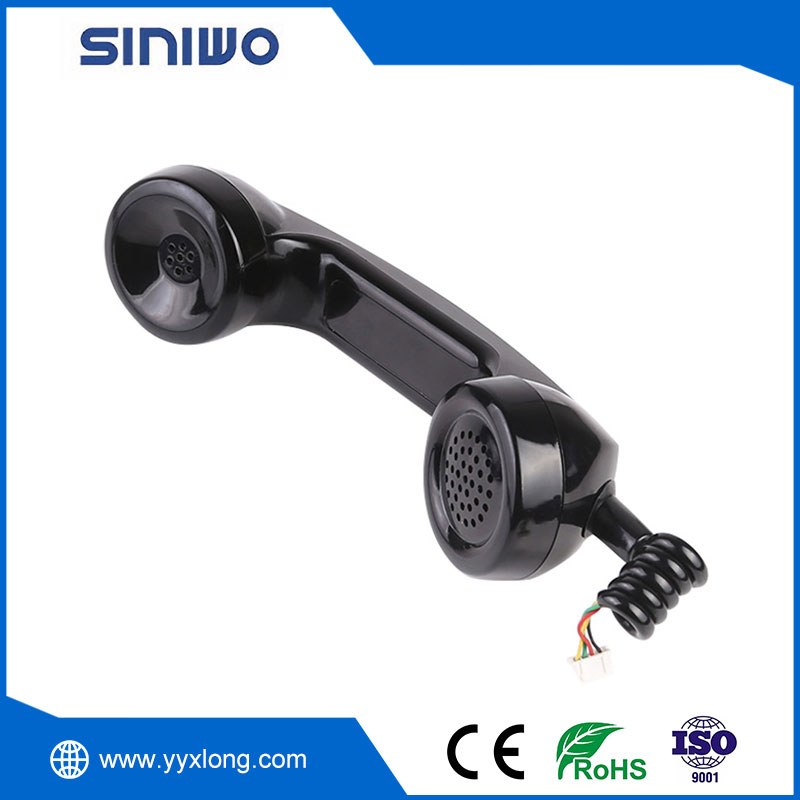Crafting Resilience: Materials and Construction Techniques in Weatherproof Telephone Handsets
2024-06-12
In today's world, where communication is crucial, telephone handsets need to be reliable in all conditions. Weatherproof telephone handsets, often found in outdoor or industrial settings, are designed to withstand extreme weather, dust, moisture, and mechanical wear. Let's delve into the materials and construction techniques that ensure these handsets remain durable and functional in the harshest environments.
Materials: The Foundation of Durability
1. High-Impact Polycarbonate
High-impact polycarbonate is a common material used in weatherproof telephone handsets. Known for its exceptional toughness and resistance to impact, polycarbonate can absorb shocks without cracking or breaking. This material ensures the handset can endure physical abuse, such as being dropped or hit, making it ideal for industrial settings.
2. Stainless Steel
For parts that require additional strength and corrosion resistance, stainless steel is often utilized. Stainless steel components, such as screws, hinges, and mounting plates, are impervious to rust and degradation, even in salty or humid environments. This ensures the handset maintains its structural integrity over time.
3. Rubber Seals and Gaskets
Rubber seals and gaskets are crucial for creating watertight and dust-tight seals. These components are typically made from silicone rubber, which offers excellent flexibility, durability, and resistance to extreme temperatures. By sealing the gaps between different parts of the handset, rubber gaskets prevent the ingress of water, dust, and other contaminants.
4. UV-Resistant Coatings
Exposure to sunlight can degrade plastics and other materials. To prevent this, weatherproof telephone handsets are often coated with UV-resistant coatings. These coatings protect the handset from the damaging effects of UV radiation, ensuring that the material does not become brittle or discolored over time.
Construction Techniques: Ensuring Comprehensive Protection
1. Sealed Enclosures
The design of a weatherproof telephone handset typically features a sealed enclosure. The enclosure is meticulously constructed to prevent water, dust, and other environmental factors from entering the handset. This often involves the use of interlocking parts and precision engineering to create tight seals.
2. Reinforced Housing
Reinforcement of the handset housing is crucial for protecting the internal components from mechanical damage. This often involves integrating additional layers of durable materials or using ribbed designs to enhance the structural strength of the handset. The reinforced housing absorbs and dissipates impact energy, safeguarding the internal electronics.
3. Weatherproof Connectors
Weatherproof telephone handsets use specialized connectors that can maintain a secure connection in adverse conditions. These connectors are designed with protective covers and sealing mechanisms that prevent moisture and dust from compromising the electrical connections. Gold-plated connectors are also used to resist corrosion and ensure reliable signal transmission.
4. Potted Electronics
To protect the internal electronic components from moisture and vibration, a process called potting is often employed. Potting involves encasing the electronics in a protective resin, which hardens to form a solid barrier. This technique not only shields the components from environmental factors but also provides mechanical stability, reducing the risk of damage from shocks and vibrations.
5. Shielded Cables
The cables used in weatherproof telephone handsets are typically shielded to protect against electromagnetic interference (EMI) and physical damage. The shielding can be made from braided metal or foil, which prevents external signals from disrupting the communication. Additionally, the cables are often encased in robust, flexible jackets that resist wear and tear.
Conclusion: Built to Endure
Weatherproof telephone handsets are engineering marvels designed to operate reliably in the toughest conditions. By using durable materials like high-impact polycarbonate, stainless steel, and silicone rubber, and employing construction techniques such as sealed enclosures, reinforced housing, and potted electronics, these handsets provide dependable communication solutions. Whether in an industrial setting, a marine environment, or an outdoor public area, weatherproof telephone handsets ensure that communication remains uninterrupted, regardless of the challenges posed by the environment.



